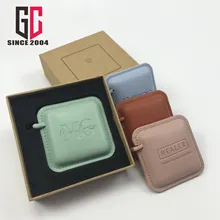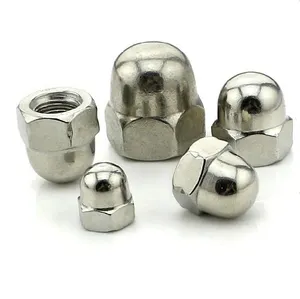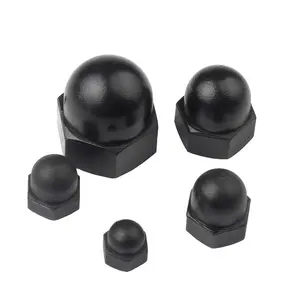Introduction to Connecting Cap Nuts
Connecting cap nuts, also known as acorn nuts or crown hex nuts, are specialized fasteners designed to provide a secure and aesthetic finish to threaded bolts. These nuts are integral in various industries, offering a clean and safe way to cover exposed threads to prevent tampering and protect against injury.
Types and Materials
The type G connecting cap nuts are a popular variant, known for their closed-end design that ensures a seamless finish. Materials range from robust stainless steel to brass, each selected for its unique properties. Stainless steel cap nuts are revered for their corrosion resistance, making them ideal for outdoor applications, while brass cap nuts offer electrical conductivity and are often used in electrical applications.
Applications and Features
Connecting cap nuts are not limited to a single use; they are versatile components found in furniture assembly, automotive industries, and even in electronic devices. The m6 furniture connector bolts and cap nuts are commonly used in flat-pack furniture kits, providing a secure joint that is both strong and aesthetically pleasing. In automotive applications, these nuts are used to ensure that components remain secure despite the high-vibration environment.
Advantages of Using Connecting Cap Nuts
The primary advantage of using connecting cap nuts lies in their ability to protect threads and ensure a secure fastening solution. Their design allows for easy installation, and when paired with the appropriate bolt, such as an m6 furniture connector bolt, they can significantly enhance joint stability. The internal threading of locknuts offers additional security, making them an excellent choice for applications that experience high levels of vibration and torque.
Selection Considerations
When selecting a connecting cap nut for a specific application, it is crucial to consider the environment in which it will be used. For instance, stainless steel cap nuts are suitable for environments prone to moisture due to their rust-resistant nature. On the other hand, type G connecting cap nuts are chosen for their closed-end design that provides a neat finish and additional safety.
Conclusion
In conclusion, the connecting cap nut is a fundamental component in various assembly tasks, offering both functional and aesthetic benefits. With a range of types and materials available, these nuts can be tailored to meet the specific needs of an application, ensuring a secure and reliable fastening solution.













































 浙公网安备 33010002000092号
浙公网安备 33010002000092号 浙B2-20120091-4
浙B2-20120091-4